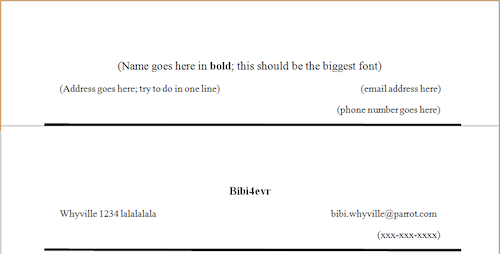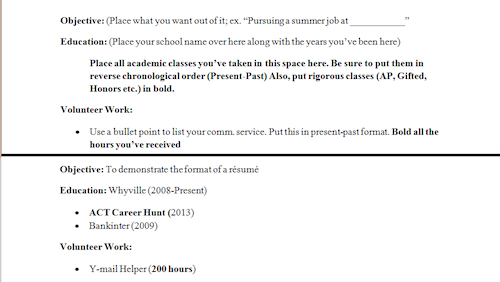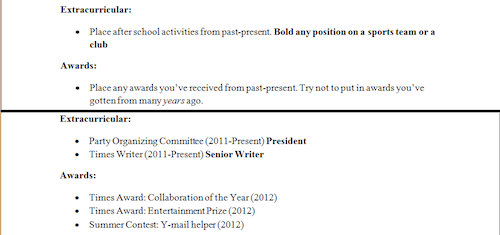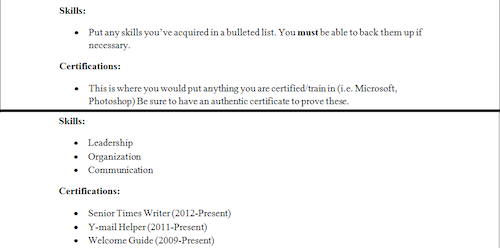Summer is in the air. With it comes the joys of hanging with friends and going to various places. This of course, does not always come cheap. A summer job is a convenient way to have money available for such trips.
With these jobs come pesky applications and daunting interviews. These interviews in particular tend to go in either of two ways: smooth, and flowing or awkward, and choppy. The awkward comes from both the interviewer, not knowing what to ask you about, and the interviewee having no idea what to bring up.
A nice and professional way to prevent situations like that above, is presenting a resume to the employer. They now have a perfectly organized list of important information about you. Instead of hunting for miscellaneous questions from air, they can go into detail about specific information found in your resume.
The best part about resumes is that there is a basic format followed by a majority of people, so once you've made yours, all you really have to do is update yearly.
I decided to show the process of making a resume, by making a fake Whyville one to compare to. Keep in mind that I had way too much fun making this particular resume.

This picture shows how the heading for the resume should be made. Important restrictions to follow through for this section is that your name should be bold, and in a larger size than the rest of the paper. Also before you even place your e-mail address, it is important to consider if it is a professional one. You would not want to hand a future employer something like "prettyprinces.k00lkatz@prettyinpink.glitter".

Right underneath your header belongs the very reason why you made the resume. For someone who is interested in a job, the job position/workplace name would take the place of the blank. This objective line should be one, concise sentence. When it comes to education, list your current school/college, and in parenthesis add the dates you've attended it. Underneath the category, place classes you've taken there in Present-Past order.

All sports teams and clubs you've participated in with your school/college should be placed under extracurricular. It would also be wise to add any competitions that did not occur during school hours here. Be sure to put the dates you were in said team/club/event as well as bold any possible position. When putting in awards, double-check you know the location of your certificates/trophies in case proof becomes necessary.

When doing the Skills section, it is imperative that you can prove you've acquired the skills you've listed. Anyone can write down they have "Computer Literacy" but the only ways to really prove this are certifications for Microsoft and etc. Also, for those of you who would like to put "Bilingual" under this section, you must be fluent in the specified language (able to both speak and write). The certifications section is where you can place items like "Microsoft Office Excel Specialist" and any task/position you have a certificate for.

Some employer may/may not be looking for references. You can find this out with a glance at their website application page or a quick phone call. By adding "References Upon Request" you could use the same resume for any job, instead of having to change it if the employer does/does not want it. However, when an employer does request references, they will go on a separate page.

After doing the above steps, your resume should look similar to the image on the right. Voila! You have yourself a reusable resume at your disposal.
Considerations Not Mentioned:
- MUST be ONE page only (if you have too many items, take off what you think is least important to your objective)
- You can add columns to maximize the amount of items you can type
- There are multiple ways you can make the resume; the one factor you must keep in mind though is consistency
I wish you all the best of luck in your future endeavors, and have a safe and exciting summer!